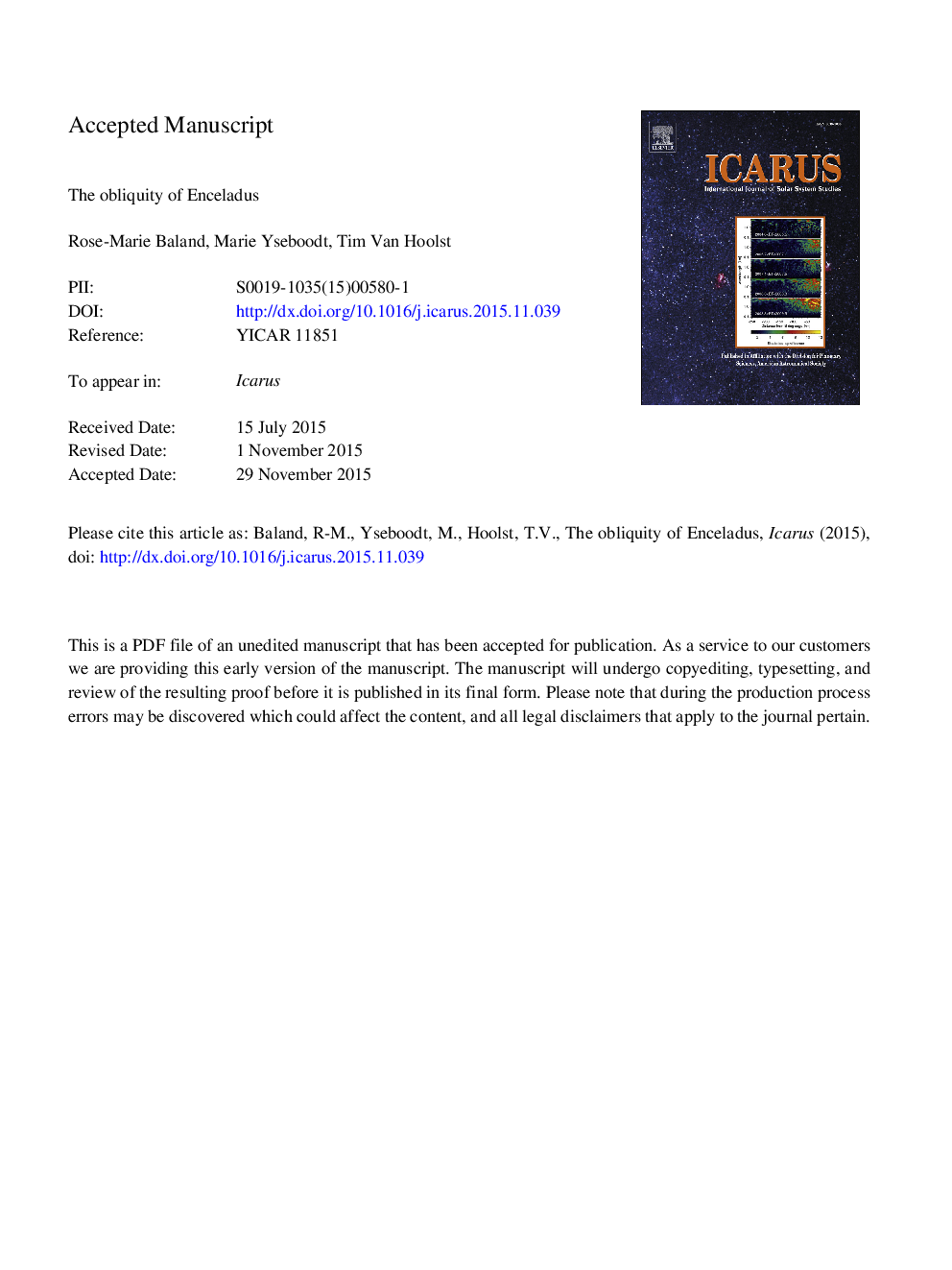| کد مقاله | کد نشریه | سال انتشار | مقاله انگلیسی | نسخه تمام متن |
|---|---|---|---|---|
| 8135543 | 1523522 | 2016 | 76 صفحه PDF | دانلود رایگان |
عنوان انگلیسی مقاله ISI
The obliquity of Enceladus
ترجمه فارسی عنوان
تیرگی انسلادوس
دانلود مقاله + سفارش ترجمه
دانلود مقاله ISI انگلیسی
رایگان برای ایرانیان
کلمات کلیدی
انسلادوس، دینامیک چرخشی، جزر و مد، بدن جامد، فضای داخلی،
موضوعات مرتبط
مهندسی و علوم پایه
علوم زمین و سیارات
علوم فضا و نجوم
چکیده انگلیسی
The extraordinary activity at Enceladus' warm south pole indicates the presence of an internal global or local reservoir of liquid water beneath the surface. While Tyler (Tyler, R.H. [2009]. Geophys. Res. Lett. 36(15), L15205; Tyler, R.H. [2011]. Icarus 211(1), 770-779) has suggested that the geological activity and the large heat flow of Enceladus could result from tidal heating triggered by a large obliquity of at least 0.05-0.1°, theoretical models of the Cassini state predict the obliquity to be two to three orders of magnitude smaller for an entirely solid and rigid Enceladus. We investigate the influence of an internal subsurface ocean and of tidal deformations of the solid layers on the obliquity of Enceladus. Our Cassini state model takes into account the external torque exerted by Saturn on each layer of the satellite and the internal gravitational and pressure torques induced by the presence of the liquid layer. As a new feature, our model also includes additional torques that arise because of the periodic tides experienced by the satellite. We find that the upper limit for the obliquity of a solid Enceladus is 4.5Ã10-4 degrees and is negligibly affected by elastic deformations. The presence of an internal ocean decreases this upper limit by 13.1%, elasticity attenuating this decrease by only 0.5%. For larger satellites, such as Titan, elastic effects could be more significant because of their larger tidal deformations. As a consequence, it appears that it is easier to reconcile the theoretical estimates of Titan's obliquity with the measured obliquity than reported in previous studies wherein the solid layers or the entire satellite were assumed to be rigid. Since the obliquity of Enceladus cannot reach Tyler's requirement, obliquity tides are unlikely to be the source of the large heat flow of Enceladus. More likely, the geological activity at Enceladus' south pole results from eccentricity tides. Even in the most favorable case, the upper limit for the obliquity of Enceladus corresponds to about two meters at most at the surface of Enceladus. This is well below the resolution of Cassini images. Control point calculations cannot be used to detect the obliquity of Enceladus, let alone to constrain its interior from an obliquity measurement.
ناشر
Database: Elsevier - ScienceDirect (ساینس دایرکت)
Journal: Icarus - Volume 268, April 2016, Pages 12-31
Journal: Icarus - Volume 268, April 2016, Pages 12-31
نویسندگان
Rose-Marie Baland, Marie Yseboodt, Tim Van Hoolst,
